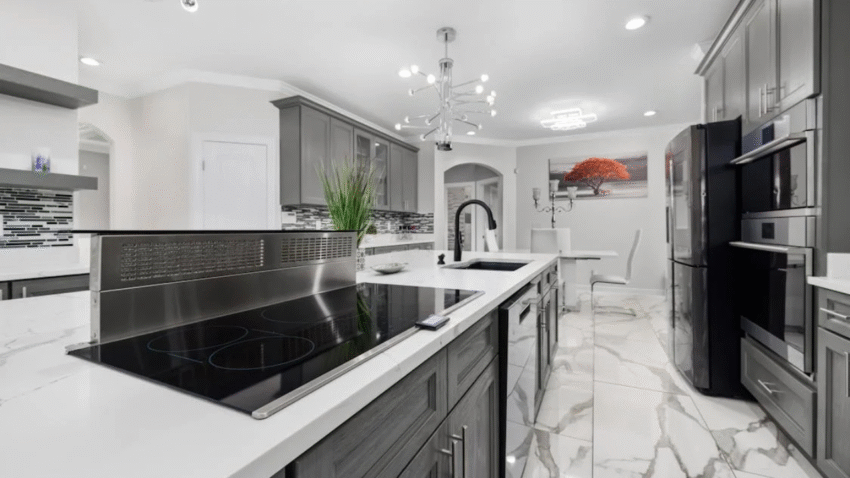Introduction
Tired of digging through a cluttered drawer or fumbling through a knife block? A magnetic knife strip offers a sleek, space-saving solution that keeps your knives visible, accessible, and safely stored. In this complete guide, you’ll learn how to mount a magnetic knife strip step-by-step—whether on tile, drywall, or wood—so you can upgrade your kitchen setup with confidence.
Why Mounting a Magnetic Knife Strip Matters in the Kitchen
A magnetic knife strip isn’t just about aesthetics—it’s about function and safety. Properly mounted, it:
- Frees up valuable counter and drawer space
- Keeps knives organized and easy to access
- Prevents dulling and damage caused by overcrowded drawers
- Adds a clean, professional look to your kitchen
Plus, when knives are stored openly but securely, you’re more likely to use the right tool for the job—and less likely to cut yourself fumbling for it.
Step-by-Step Guide to Mounting a Magnetic Knife Strip
1. Choose the Right Location
Select a spot that’s:
- Convenient to your prep area
- High enough to keep knives out of children’s reach
- Away from direct heat or moisture (like above a stove or sink)
Popular spots:
- Backsplash area above your counter
- The side of a cabinet or pantry wall
- Inside a cabinet door (if using low-profile strips)
Kitchen Tip: Hold your strip up to the wall with painter’s tape first to test location, visibility, and reach.
2. Gather Your Tools and Materials
Here’s what you’ll typically need:
- Magnetic knife strip (with included mounting hardware)
- Power drill and drill bits
- Level
- Pencil
- Tape measure
- Wall anchors (if mounting on drywall or tile)
- Screwdriver
Optional: Tile drill bit (for mounting on tile) or stud finder (for anchoring in wall studs)
3. Mark the Mounting Holes
Once you’ve chosen your spot:
- Use a level to ensure the knife strip will be straight.
- Hold the strip against the wall and mark the screw holes with a pencil.
- Measure again to confirm it’s centered and level.
Pro Tip: Double-check that the strip is not obstructing cabinet doors or outlets.
4. Drill Pilot Holes
Drywall or wood mounting:
- Use a small drill bit (around 1/8 inch) to drill pilot holes where you marked the screw positions.
Tile or masonry:
- Use a tile or masonry bit to carefully drill holes into the surface. Go slowly to avoid cracking.
Reminder: Wear safety goggles and use painter’s tape over the drill marks on tile to reduce chipping.
5. Install Wall Anchors (if needed)
If you’re not drilling into studs or solid wood:
- Insert drywall anchors into the pilot holes. These keep screws from loosening over time.
- Tap gently with a hammer until flush with the wall.
Tip: Choose anchors rated for at least 10–15 lbs to support the strip and multiple knives.
6. Screw the Strip Into Place
Align the strip over the holes and insert the screws through the mounting holes into the anchors (or directly into wood/studs).
- Tighten until snug, but don’t overtighten—this can crack the wall or strip.
Optional: Some strips have a mounting bracket and detachable cover—attach the bracket first, then snap the magnetic face into place.
7. Test the Strip and Add Knives
Once mounted:
- Tug lightly on the strip to make sure it’s secure
- Add one knife at a time, starting with lighter ones
- Observe how the strip handles weight—adjust screws if any loosen
Safety Tip: Place knives with the blade facing upward or sideways, not downward, to reduce the risk of accidents when grabbing them.
Common Mistakes to Avoid
Mistake 1: Skipping the Level
Solution: Always use a level to mark holes. An uneven strip is not only unattractive—it can affect magnetic hold and knife safety.
Mistake 2: Mounting Too Close to Heat or Moisture
Solution: Avoid placing the strip above the stove or sink. Heat and humidity can weaken adhesives or promote rust on knives.
Mistake 3: Using Weak Anchors
Solution: Don’t rely on basic plastic wall plugs for heavy-duty strips. Use sturdy metal anchors or mount directly into studs.
Mistake 4: Choosing a Strip That’s Too Short
Solution: Measure your knife collection first. Leave space between each knife to prevent overcrowding or accidental dislodging.
Mistake 5: Mounting on Hollow Cabinet Sides
Solution: Some cabinet sides aren’t strong enough to support weight. Reinforce from inside or choose a sturdier wall spot.
Extra Tips & Kitchen Hacks
Tip 1: Use a Stud Finder for Extra Security
If mounting on drywall, locating and securing at least one screw into a stud gives you extra stability—especially for heavy-duty knife strips.
Tip 2: Clean the Strip Regularly
Wipe down your knife strip weekly with a damp cloth and mild cleaner. This prevents dust, grease, or food particles from reducing magnetic strength.
Tip 3: Store Other Tools, Too
You can use magnetic strips to store:
- Kitchen shears
- Metal measuring spoons
- Bottle openers
- Small prep tools
Hack: Mount an additional strip inside a cabinet or pantry for organizing these items discreetly.
Tip 4: Upgrade With a Wood-Faced Strip
If you prefer a softer look or want to protect delicate knife blades, opt for a magnetic strip with a wood veneer. It blends better with kitchen decor and adds a natural feel.
Related Task: After mounting your strip, declutter your drawer or knife block—check out How to Organize Kitchen Tools in Drawers for more space-saving ideas.
Conclusion
Mounting a magnetic knife strip is a simple upgrade that brings convenience, organization, and style to your kitchen. With just a few tools and about 15–30 minutes, you’ll free up space, protect your knives, and make your prep area safer and more efficient.
Follow the steps in this guide, avoid common mistakes, and enjoy the satisfaction of having your kitchen tools displayed like a pro. Bookmark this page for future reference, and keep building the kitchen of your dreams—one smart step at a time.
